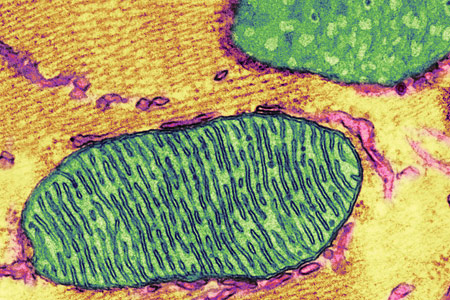



Researchers at University of California San Diego School of Medicine, with colleagues at the National Institute of Diabetes and Digestive and Kidney Diseases, the University of Manitoba and St. Boniface Hospital Albrechtsen Research Centre in Canada, have identified a molecular signaling pathway that, when blocked, promotes sensory neuron growth and prevents or reverses peripheral neuropathy in cell and rodent models of type 1 and 2 diabetes, chemotherapy-induced neuropathy and HIV.

Their findings (“Selective Antagonism of Muscarinic Receptors Is Neuroprotective in Peripheral Neuropathy”) are published in the Journal of Clinical Investigation.
Peripheral neuropathy is a condition resulting from damage to the peripheral nervous system. Symptoms range from numbness, tingling, and muscle weakness to severe pain, paralysis, and organ dysfunction. An estimated 20 million Americans have some form of peripheral neuropathy, which can be a symptom of many diseases, including diabetes and HIV, or a side effect of some chemotherapies.
“Peripheral neuropathy is a major and largely untreated cause of human suffering,” said first author Nigel Calcutt, Ph.D., professor of pathology at UC San Diego School of Medicine. “It has huge associated healthcare costs.”
In their JCI paper, the researchers looked for key molecules and mechanisms used in sensory neuron growth and regrowth. In particular, they noted that the outgrowth of neurites, projections from a neuronal cell body that connect it to other neurons, was constrained by activation of muscarinic acetylcholine receptors. This was surprising, they said, because acetylocholine is a neurotransmitter usually associated with activation of cells.
With identification of this signaling pathway, the scientists suggest it is now possible to investigate the utility of antimuscarinic drugs already approved for use in other conditions as a new treatment for peripheral neuropathy.
“This is encouraging because the safety profile of antimuscarinic drugs is well characterized, with more than 20 years of clinical application for a variety of indications in Europe,” said senior study author Paul Fernyhough, Ph.D., professor in the departments of pharmacology and therapeutics and physiology at the University of Manitoba in Canada. “The novel therapeutic application of antimuscarinic antagonists suggested by our studies could potentially translate relatively rapidly to clinical use.”
 Relevant
news
Relevant
news